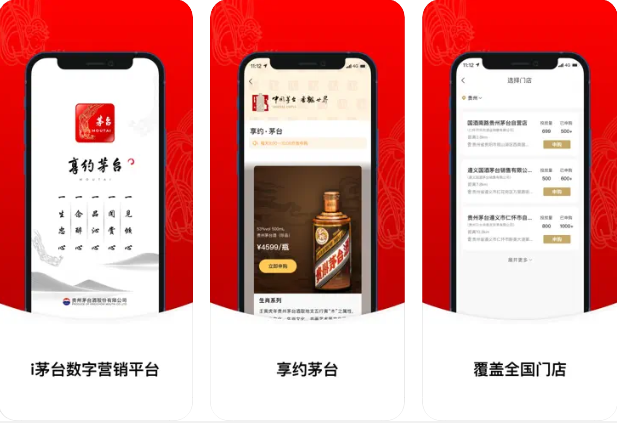On May 19, 2023, the iMoutai digital marketing platform was officially launched. After a year of development, the number of registered users of the iMoutai application has exceeded 40 million, and the average number of daily active users has exceeded 5 million. At the same time, the platform achieved more than 20 billion in revenue. These eye-catching digital achievements are astonishing, equivalent to the creation of a new enterprise worth 20 billion.

Is iMoutai a formal platform?
It is a formal platform.
iMoutai is a digital marketing APP launched by the Kweichow Moutai platform. It supports consumer online registration, real-name authentication, online and offline payment, cancellation and refund, store pickup and other functional services. Consumers can make an appointment to subscribe for the latest 4 newly released products on the iMoutai APP every day. product.
Unlike other platforms where e-commerce channels are completely independent from traditional channels, after iMoutai went online, it gave the channels new identity attributes.
1. Offline as terminal store
After iMoutai went online, the original offline channel model remained unchanged, and terminal stores sold products as usual and made profits. The product share of each dealer and store remains unchanged. How much goods were purchased in the past is now being purchased, ensuring the supply of the channel and not damaging its interests.
At the same time, the brand differentiates i Moutai from the products sold in offline stores. For example, although i Moutai has also launched Feitian Moutai, the most popular 53 degree 500ml Feitian Moutai is not available for sale on the i Moutai (APP) platform. Keep this trump card.
95% of Moutai’s sales are generated offline, and offline channels are still the main sales method. Basically, the products sold on the iMoutai (APP) platform are new or non-standard products. Offline channels have hot-selling single products, and online Lower channels have less impact.
2. Online as service backend
After iMoutai went online, it not only facilitated consumers, but also provided a fair opportunity for everyone to snap up authentic Moutai. At the same time, it also linked 2,364 offline stores, linking online and offline channels.
In addition to offline sales scenarios, the store also gained a new online identity as a backend service provider. The store cooperates with iMoutai to provide users with services such as inventory, distribution, settlement, and customer service. Consumers place orders online through the iMoutai (APP), and offline pickup, delivery and after-sales are all supported by the store.
iMoutai has added a new profit channel for stores in addition to offline sales profits. There will be additional income every month, and offline sales channels will not be affected. There are only advantages and no disadvantages for channel merchants.
3. Online and offline integration: S2b2C model
Consumers purchase from iMaotai by placing an order online and picking up the goods offline. iMoutai has connected more than 2,000 stores across the country to make them self-pickup points. After placing an order online, consumers can go to the store to pick up the goods themselves based on the store location guided by the LBS on the APP.
Consumers can enjoy a fair purchasing environment online and convenient pickup services offline. The APP also attracts traffic to offline stores. These consumers who go to the store according to the guidelines become the store's new customers, strengthening the relationship between consumers and the store.
Stores operate online and offline consumers at the same time. Online and offline stores collaborate with each other rather than compete with each other. The emergence of i Moutai will not impact existing offline channels. It is more like a supplement to offline channels. It is a re-empowerment of offline channels.
In the previous model, the focus of the brand was to increase sales and increase sales through dealers, stores and other B2B terminals. There was a huge distance between the brand and consumers, and the brand could only be promoted through dealers and stores. To reach consumers, brands do not understand the status of channels and what consumers think.
iMoutai's S2b2C model enables S-side suppliers to use the link between the B-side and the C-side to reach the C-side as much as possible, operate the C-side, and achieve precision marketing.